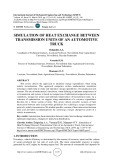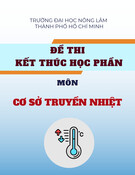
UFC 3-430-03
15 May 2003
UNIFIED FACILITIES CRITERIA (UFC)
AIR POLLUTION CONTROL
SYSTEMS FOR BOILER AND
INCINERATORS
APPROVED FOR PUBLIC RELEASE; DISTRIBUTION UNLIMITED
Simpo PDF Merge and Split Unregistered Version - http://www.simpopdf.com

UFC 3-430-03
15 May 2003
1
UNIFIED FACILITIES CRITERIA (UFC)
AIR POLLUTION CONTROL SYSTEMS FOR BOILER AND INCINERATORS
Any copyrighted material included in this UFC is identified at its point of use.
Use of the copyrighted material apart from this UFC must have the permission of the
copyright holder.
U.S. ARMY CORPS OF ENGINEERS (Preparing Activity)
NAVAL FACILITIES ENGINEERING COMMAND
AIR FORCE CIVIL ENGINEER SUPPORT AGENCY
Record of Changes (changes are indicated by \1\ ... /1/)
Change No. Date Location
This UFC supersedes TM 5-815-1, dated 9 May 1988. The format of this UFC does not conform to
UFC 1-300-01; however, the format will be adjusted to conform at the next revision. The body of
this UFC is a document of a different number.
Simpo PDF Merge and Split Unregistered Version - http://www.simpopdf.com

ARMY TM 5-815-1
AIR FORCE AFR 19-6
AIR POLLUTION CONTROL SYSTEMS
FOR
BOILERS AND INCINERATORS
DEPARTMENTS OF THE ARMY AND THE AIR FORCE
MAY 1988
Simpo PDF Merge and Split Unregistered Version - http://www.simpopdf.com

REPRODUCTION AUTHORIZATION/
RESTRICTIONS
This manual has been prepared by or for the Government and, except to the extent
indicated below, is public property and not subject to copyright.
Copyright material included in this manual has been used with the knowledge and
permission of the proprietors and is acknowledged as such at point of use. Anyone
wishing to make further use of any copyrighted materials, by itself and apart from
this text, should seek necessary permission directly from the proprietors.
Reprints or republications of this manual should include a credit substantially as
follows: :Joint Departments of the Army and Air Force, U.S., Technical Manual
TM 5-815-1/AFR 19-6, AIR POLLUTION CONTROL SYSTEMS FOR
BOILERS AND INCINERATORS."
If the reprint or republication includes a copyrighted material, the credit
should also state: "Anyone wishing to make further use of copyrighted
materials, by itself and apart from this text, should seek necessary
permission directly from the proprietors."
Simpo PDF Merge and Split Unregistered Version - http://www.simpopdf.com

TM 5-815-1/AFR 19-6
1-1
CHAPTER 1
GENERAL
1-1. Purpose ject material relating to the topic of this manual can be
a. This manual is designed to facilitate the identifica-
tion of air pollutant emission rates, and the selection of
control equipment required to meet local, state, and
federal compliance levels. Presented herein are fuel
classifications, burning equipment types, emission rate
factors, emission measuring techniques, control equip- Military facilities have air pollution control problems
ment types, and control methods. Also included arewhich are unique to their mission. Among the
discussions of stack dispersion techniques, and control problems are those associated with classified waste
equipment selection. disposal, ammunition, plant wastes, chemical warfare
b. Each control equipment chapter provides per-wastes, hazardous toxic waste, and radioactive wastes.
formance data and equipment limitations which aid in Each will require a consultant or a specialist to help
the comparative selection of control equipment types. solve the unique problem. Therefore, each unique
Each chapter includes a discussion of the basic control problem will require special handling on a case-to-case
theory, various equipment types, collection efficiency, basis. The manual does not include any information on
pressure drop, operating requirements and limitations, treatment of emissions, or the incineration of these
application, materials of construction, and advantages unique materials.
and disadvantages in relation to other type control
equipment. 1-4. Economic considerations
1-2. Scope
a. This manual has been limited to the application of more types of design are known to be feasible must be
control equipment to fuel burning boilers and incin-based on the results of a life cycle cost analyses, pre-
erators for the purpose of reducing point-source emis- pared in accordance with the requirements of the
sion rates. A procedural schematic for its use isDepartment of Defense Construction Criteria Manual
illustrated in figure 1 - 1. Although the selection of a(DOD 4270. 1-M). Standards for the conduct of all
site, a fuel, and burning equipment are outside theeconomic studies by and for the Department of the
scope of this manual, there are alternatives available to Army and the Department of the Air Force are
the engineer in arriving at the least-cost solution to air contained in AR 11-28 and AFR 178-1, respectively.
pollutant problems. Once these factors have beenSubject to guidance resulting from implementation of
decided, boiler or incineration emission rates andExecutive Order 12003 and related guidance from
reduction requirements can be estimated using chap-DOD, the cited economic analysis techniques are to
ters 2 and 3. remain valid. The basic underlying principles and the
b. If emission rates are in compliance with local,most commonly used techniques of economic analysis
state, and federal regulations for point-sources, theirare described in some detail in a variety of publications
effect on local air quality must yet be ascertained. Such and standard textbooks on engineering economy such
factors as stack height and prevailing meteorologicalas Principles of Engineering Economy by Grant,
conditions, while affecting ambient pollution levels, do Arisen, and Leavenworth; guides published by
not have an effect on point-source emission rates. They professional organizations such as the American
are considered in this manual only to make the reader Institute of Architects’ Life Cycle Cost Analysis-a
aware of their importance. These factors are unique for Guide for Architects; and handbooks prepared by
each particular site, and usually warrant expert con-government agencies such as the Naval Facilities
sultation. If emission rates for a boiler or incineratorEngineering Command's "Economic Analysis
are above local, state or federal requirements, or if air- Handbook”, NAVFAC P-442. Clarification of the basic
quality regulations might be violated, selection of astandards and guidelines for a particular application
pollution control device will be required. The technical and/or supplementary standards for guidelines which
and cost selection of control equipment are embodied may be required for special cases may be obtained by
in this manual. request through normal channels to Headquarters of
c. Appendix A contains a list of references used inthe particular service branch involved.
this manual. A bibliography listing publications of sub-
found at the end of this manual. Also included is a
glossary listing abbreviations and a brief definition of
terminology used in the text.
1-3. Unique control problems
The selection of one particular type of design for a
mechanical system for a given application when two or
Simpo PDF Merge and Split Unregistered Version - http://www.simpopdf.com




![Đề cương tuabin lò hơi [mới nhất]](https://cdn.tailieu.vn/images/document/thumbnail/2015/20150723/vinadnh/135x160/1764936_356.jpg)



![Kim loại chế tạo lò hơi và tính sức bền Chương 10: [Hướng dẫn chi tiết]](https://cdn.tailieu.vn/images/document/thumbnail/2012/20120902/dacnac/135x160/2531346594857.jpg)

![Bộ hâm nước và bộ sấy không khí lò hơi: Chương 7 [Chuẩn SEO]](https://cdn.tailieu.vn/images/document/thumbnail/2012/20120902/dacnac/135x160/7821346594780.jpg)








![Ngân hàng trắc nghiệm Kỹ thuật lạnh ứng dụng: Đề cương [chuẩn nhất]](https://cdn.tailieu.vn/images/document/thumbnail/2025/20251007/kimphuong1001/135x160/25391759827353.jpg)






